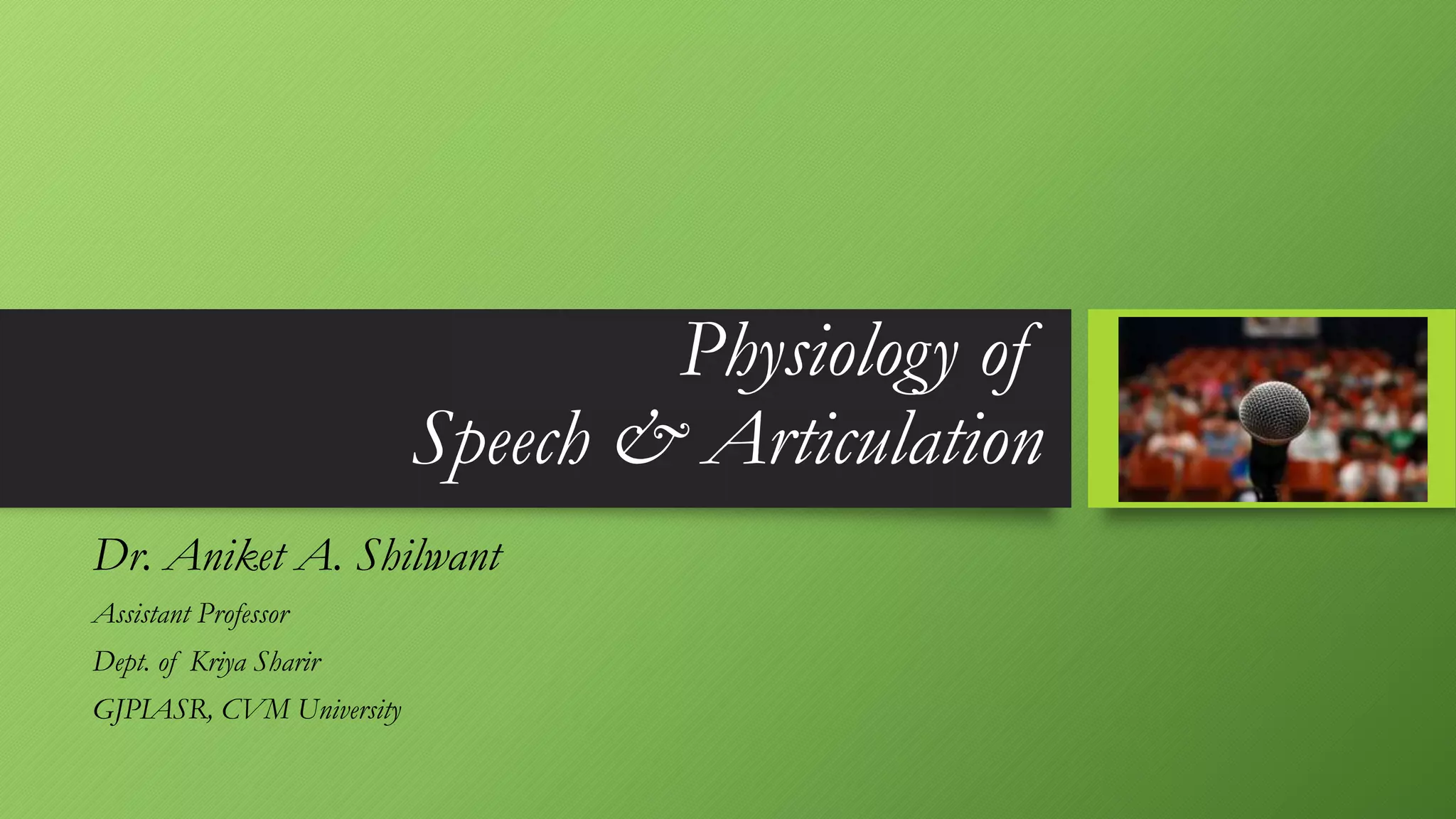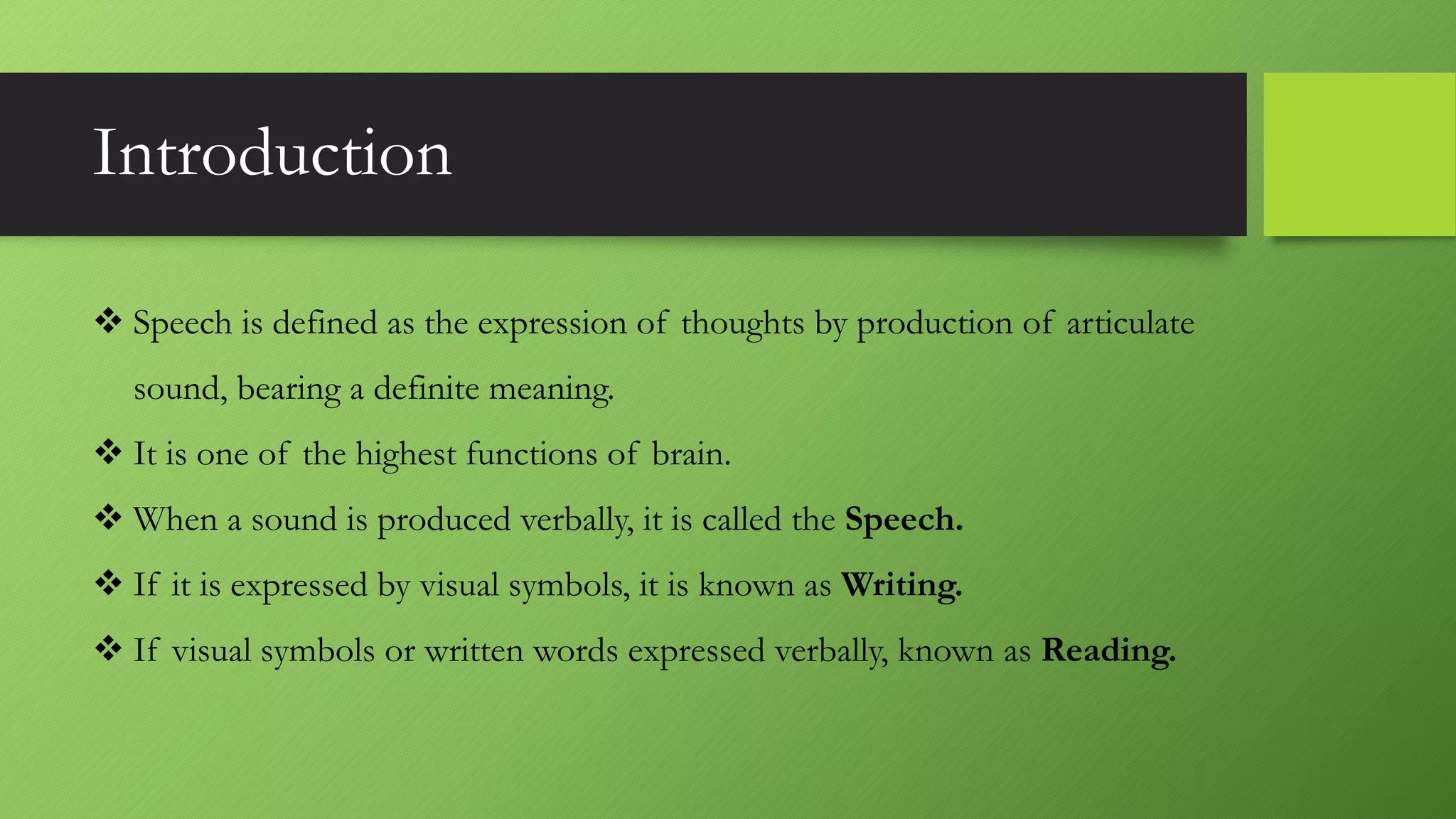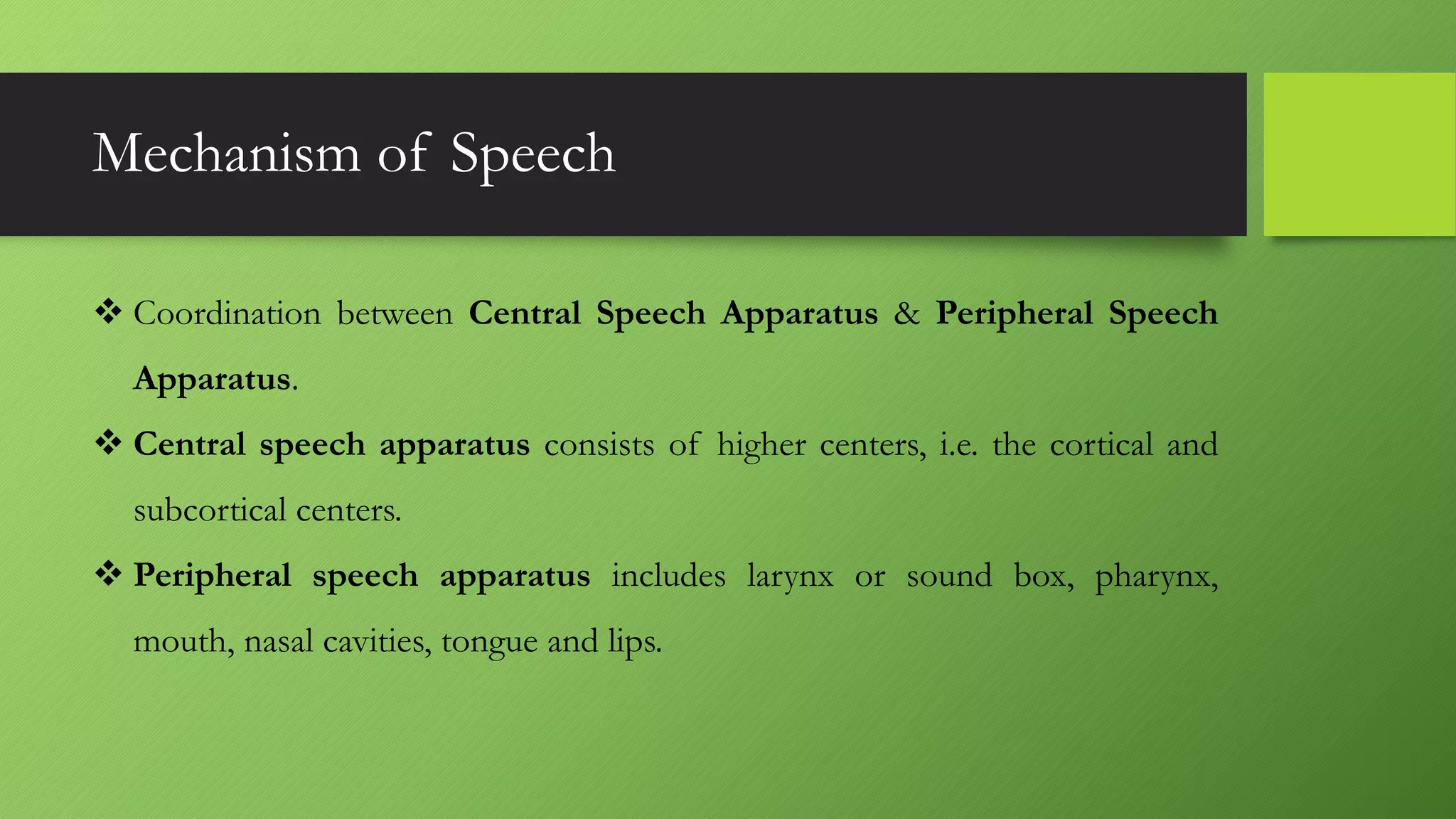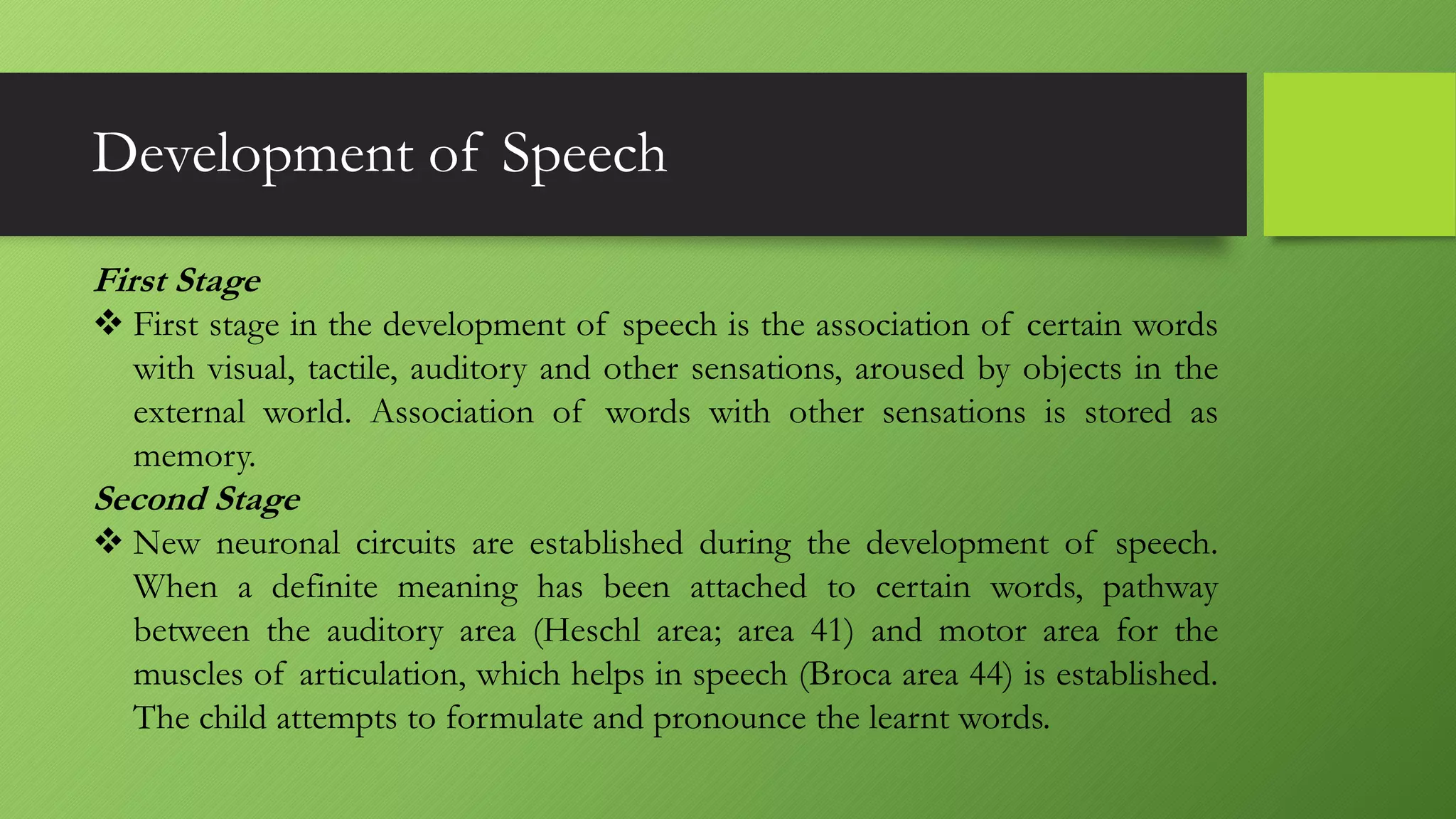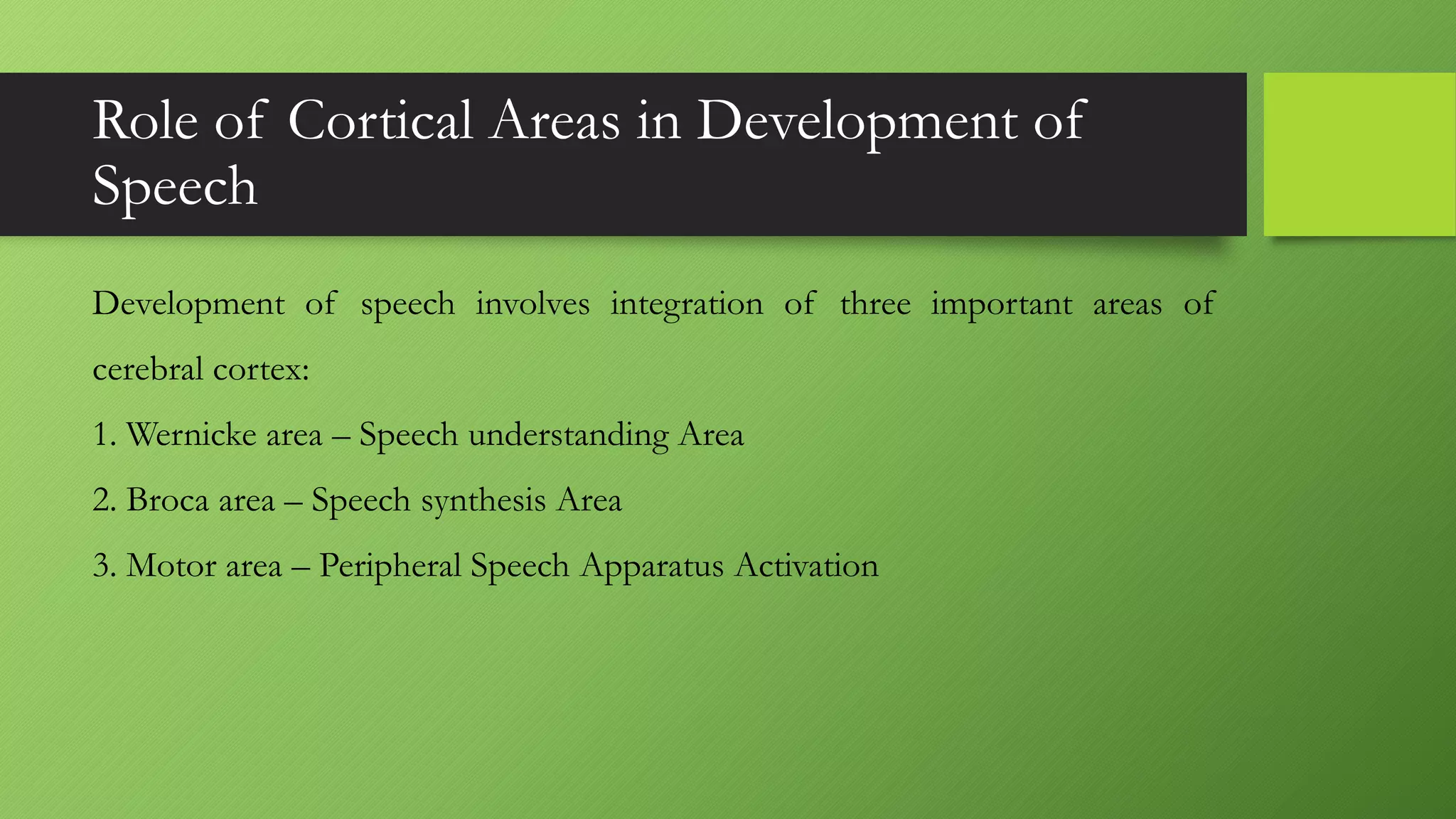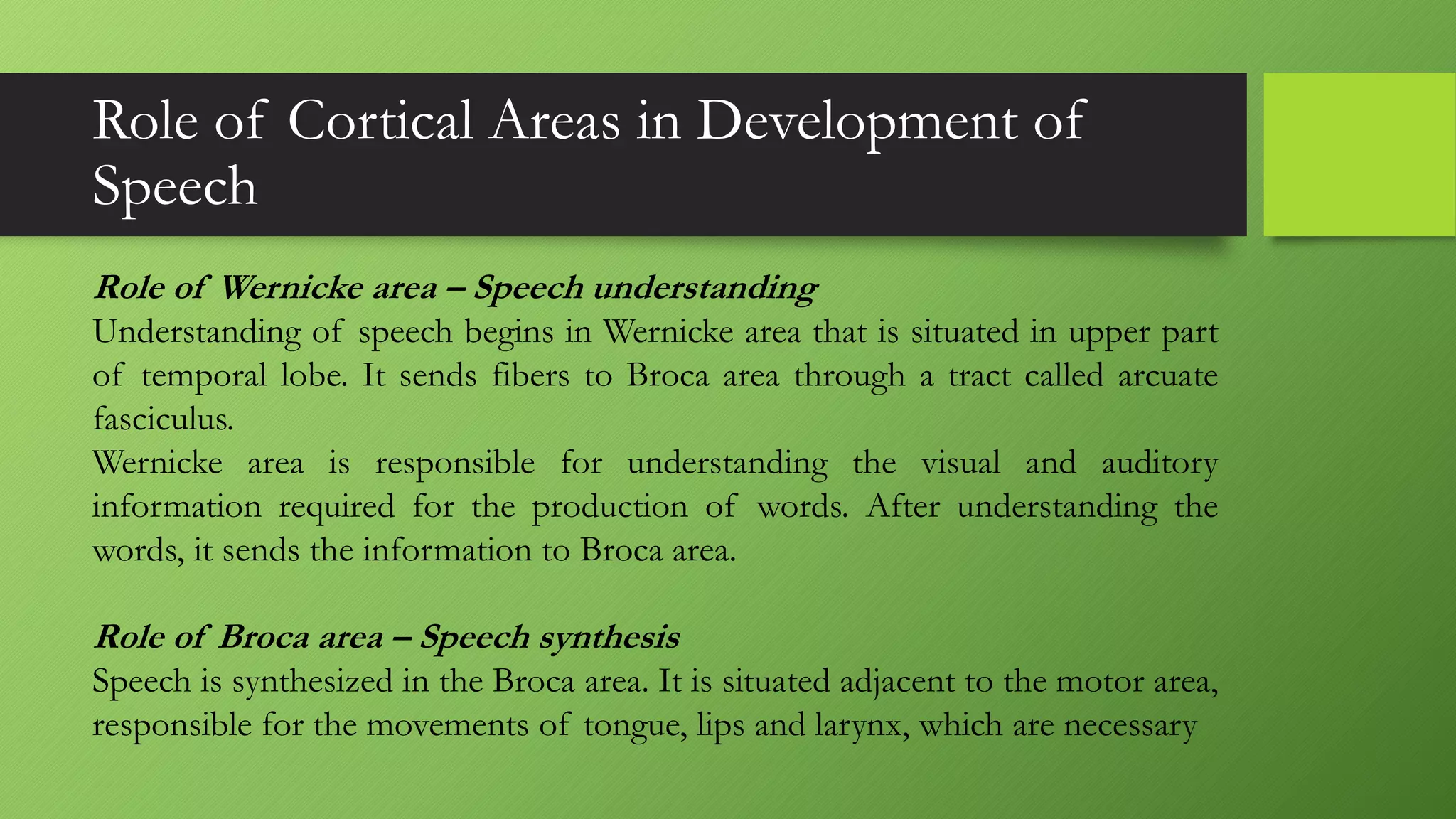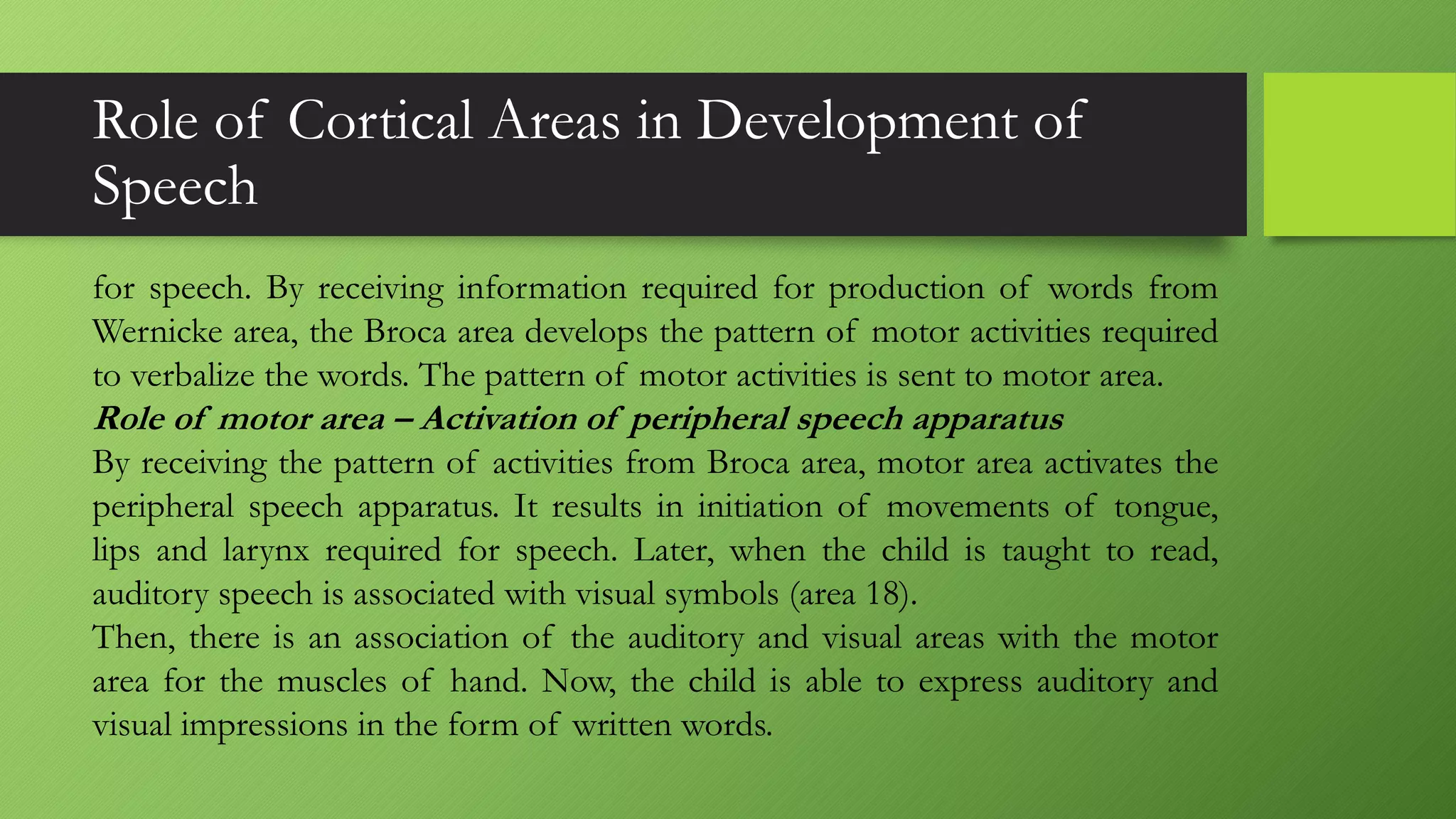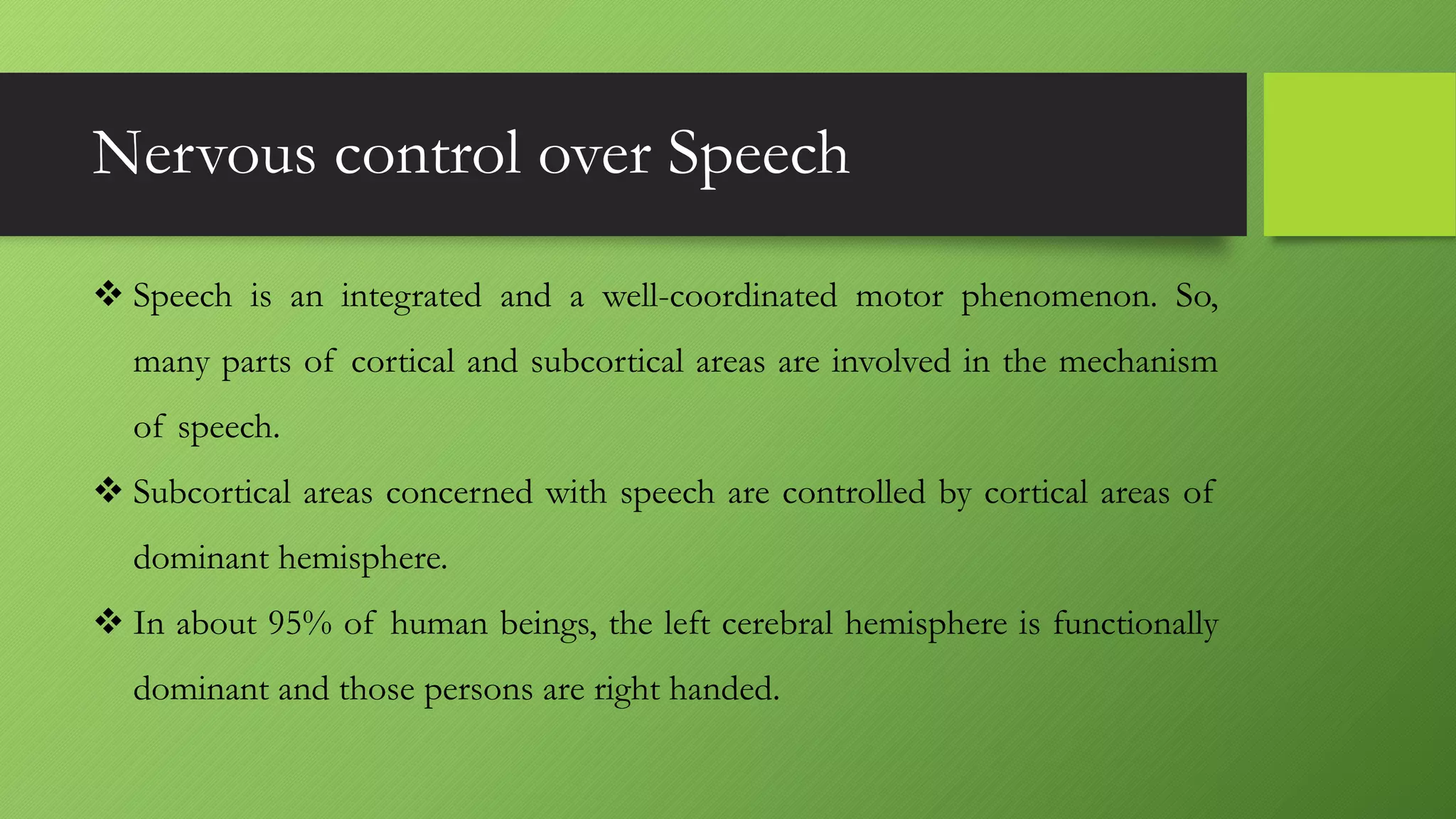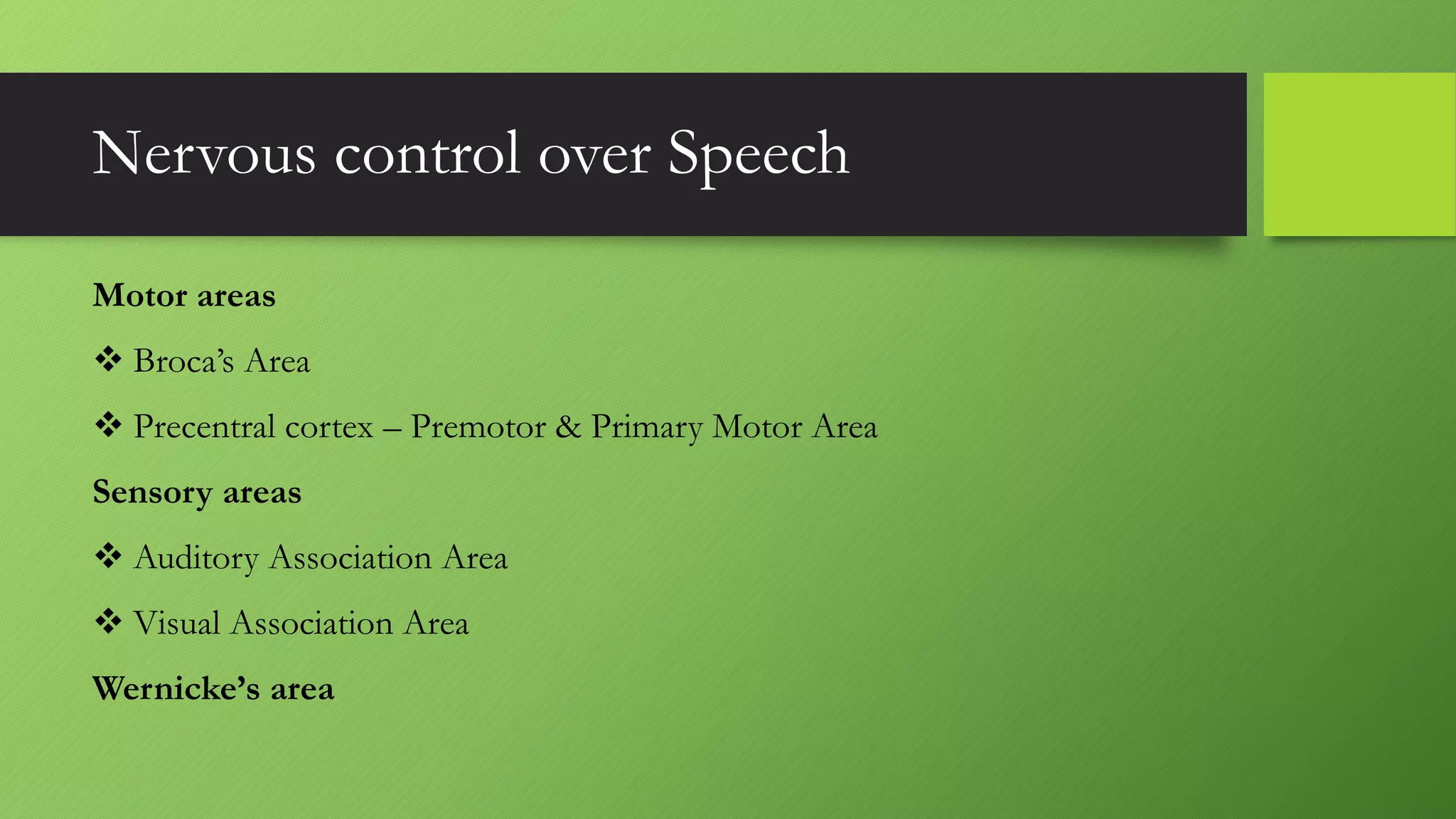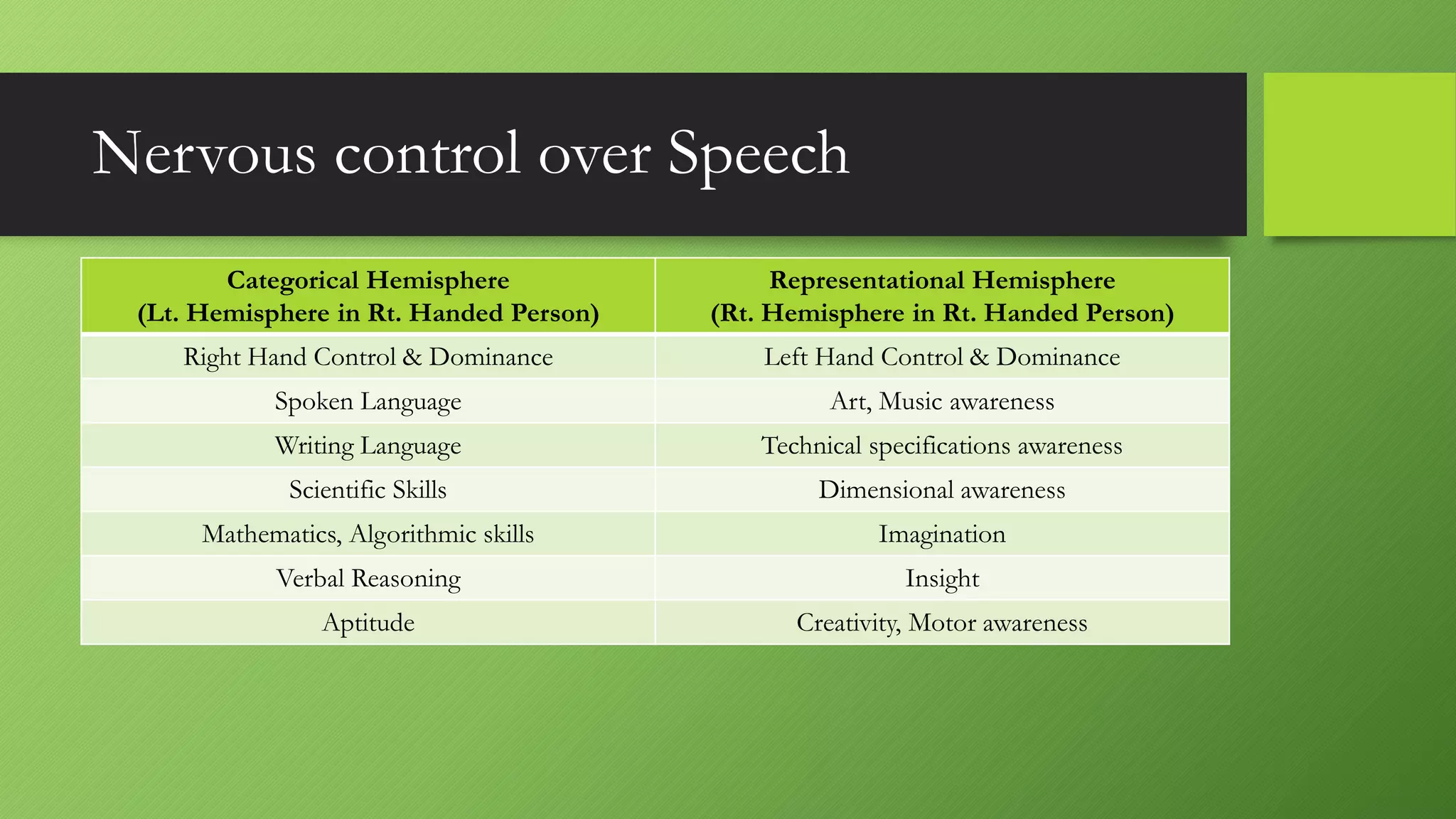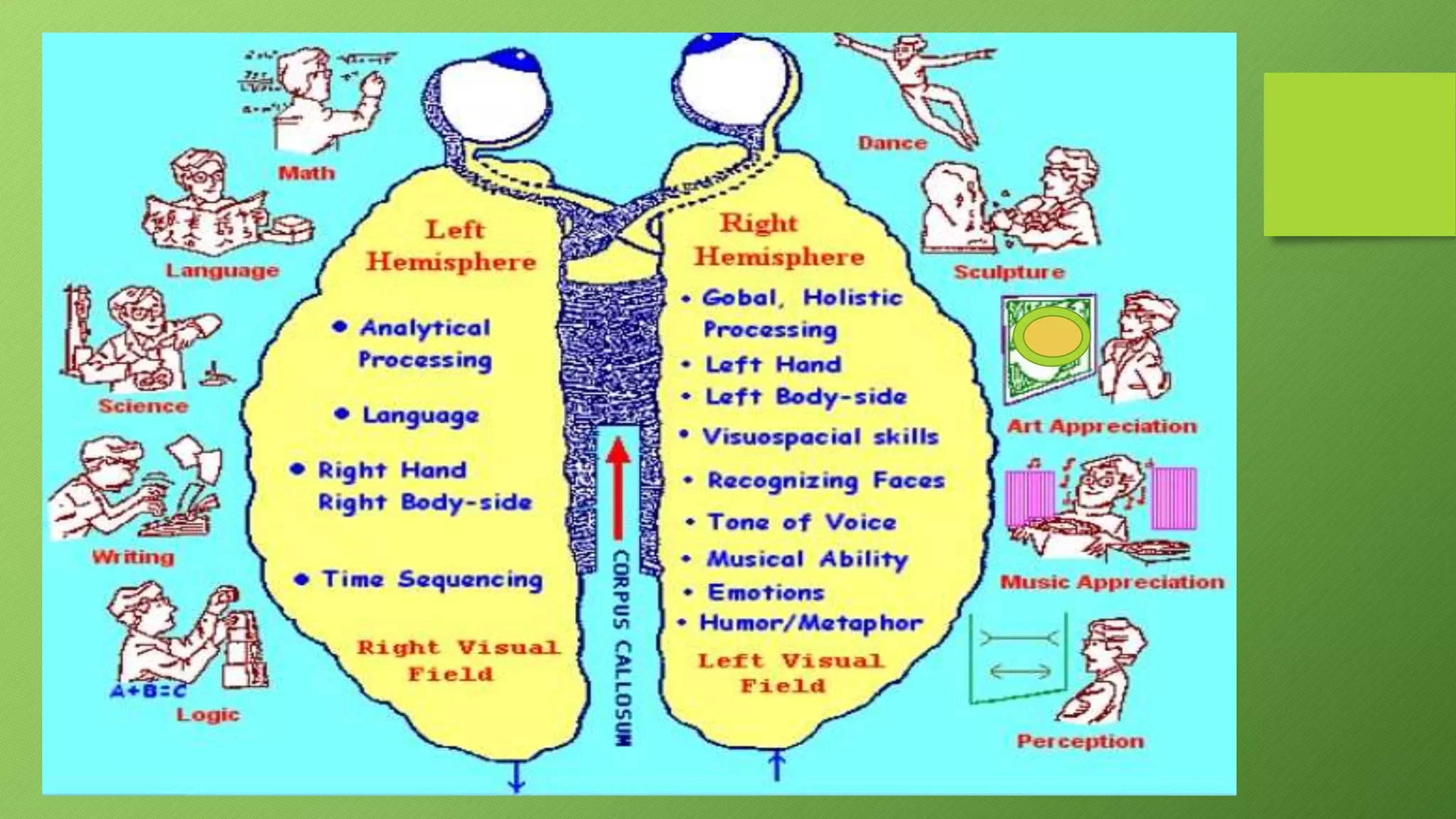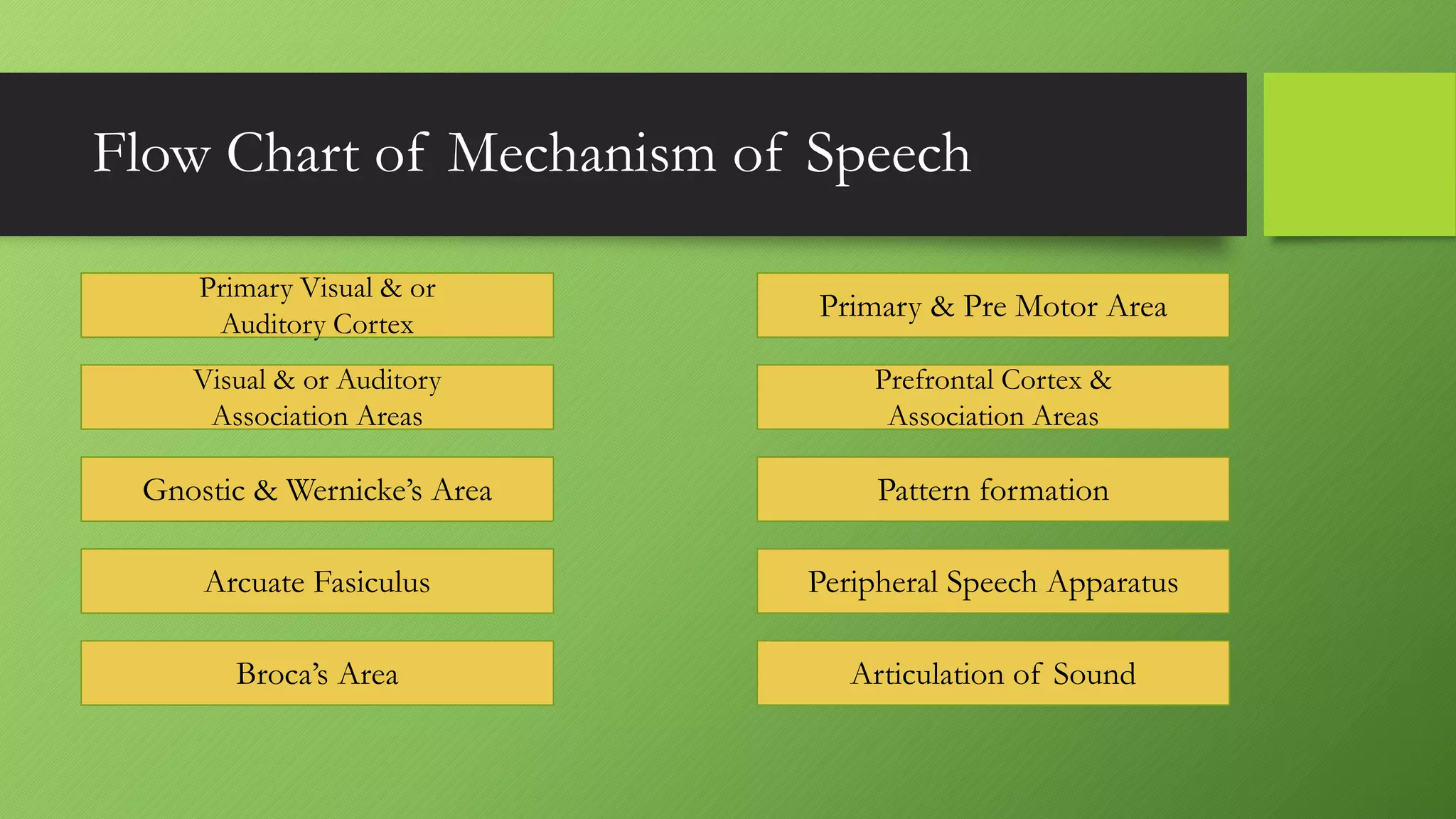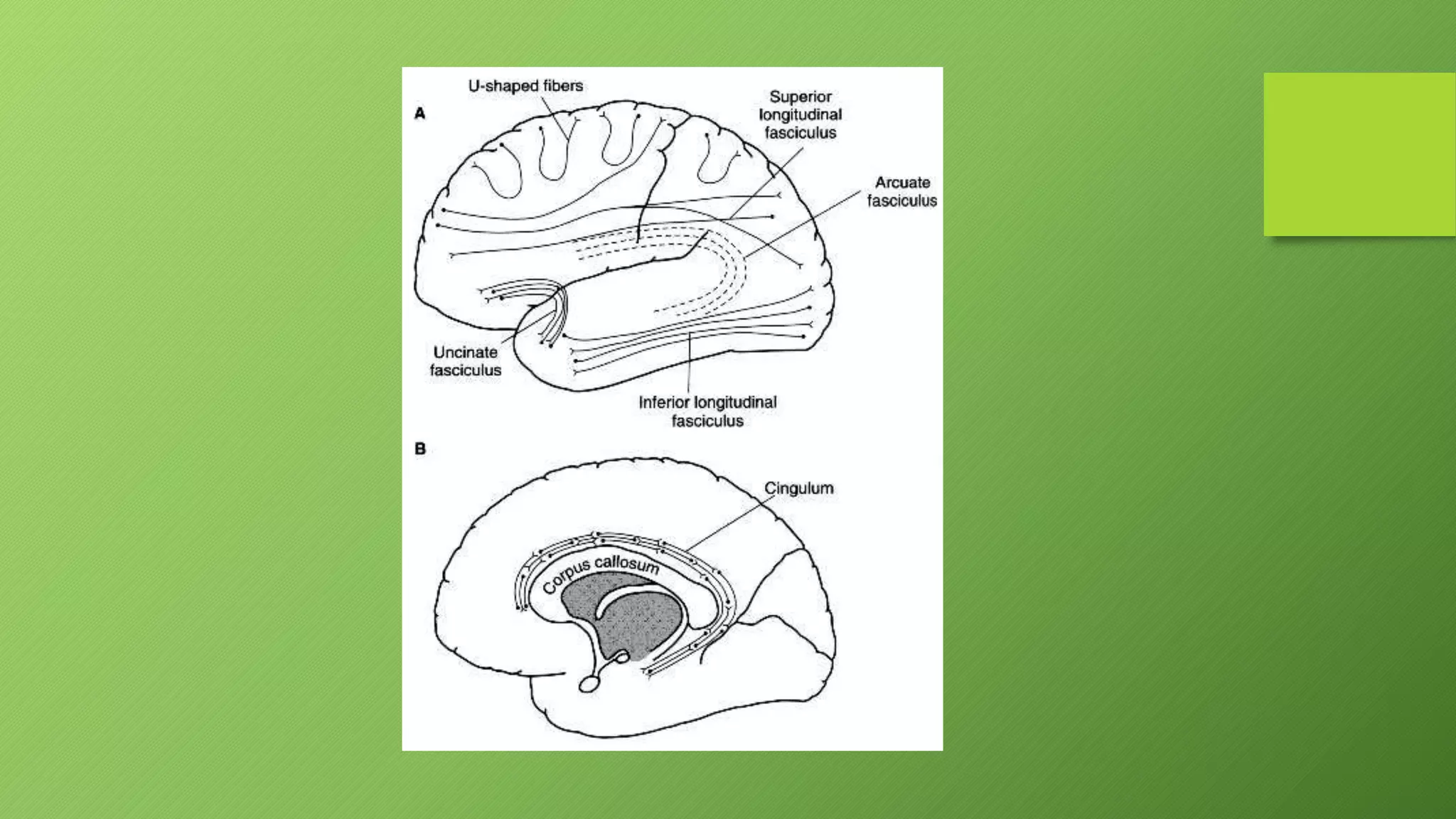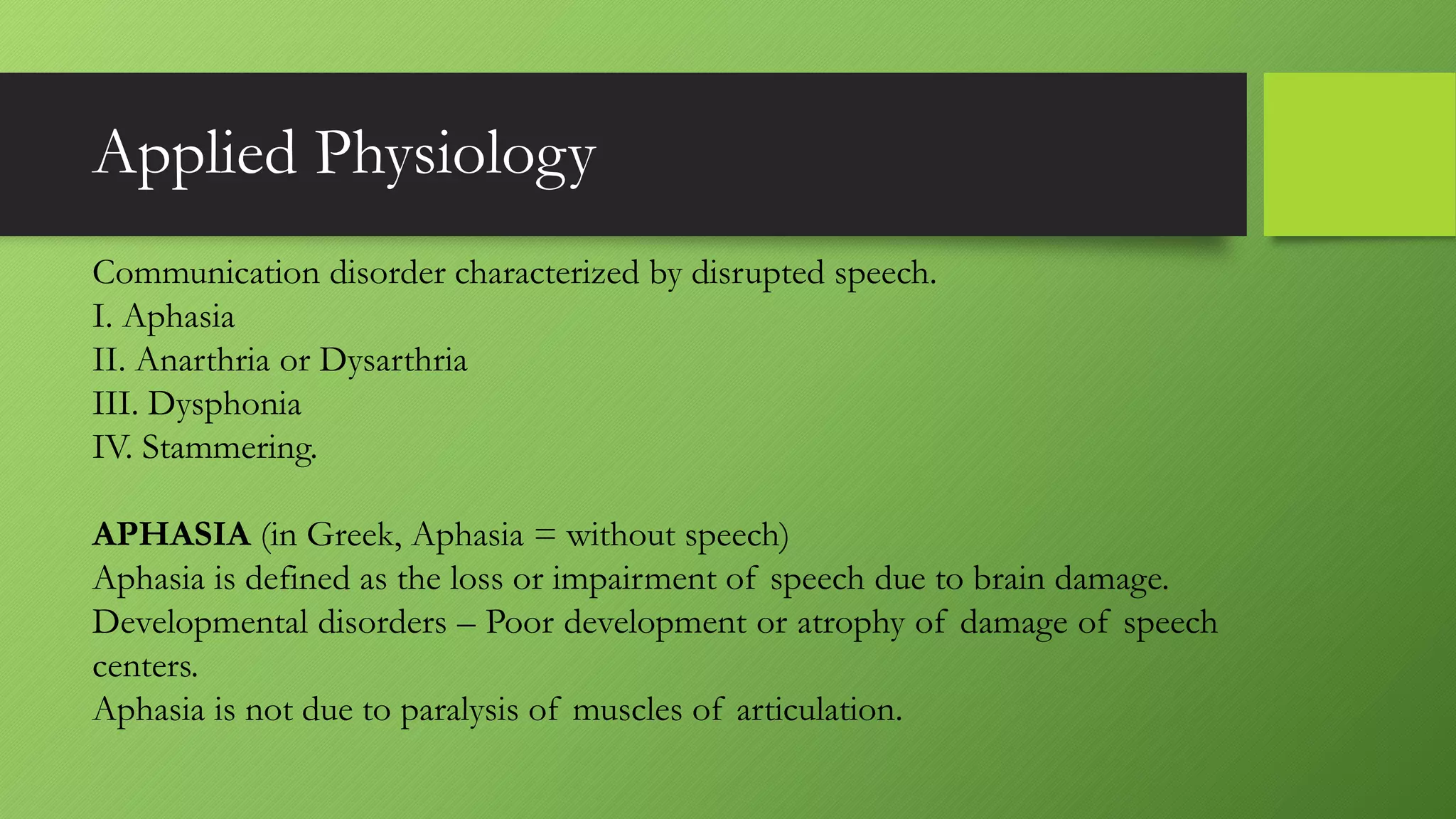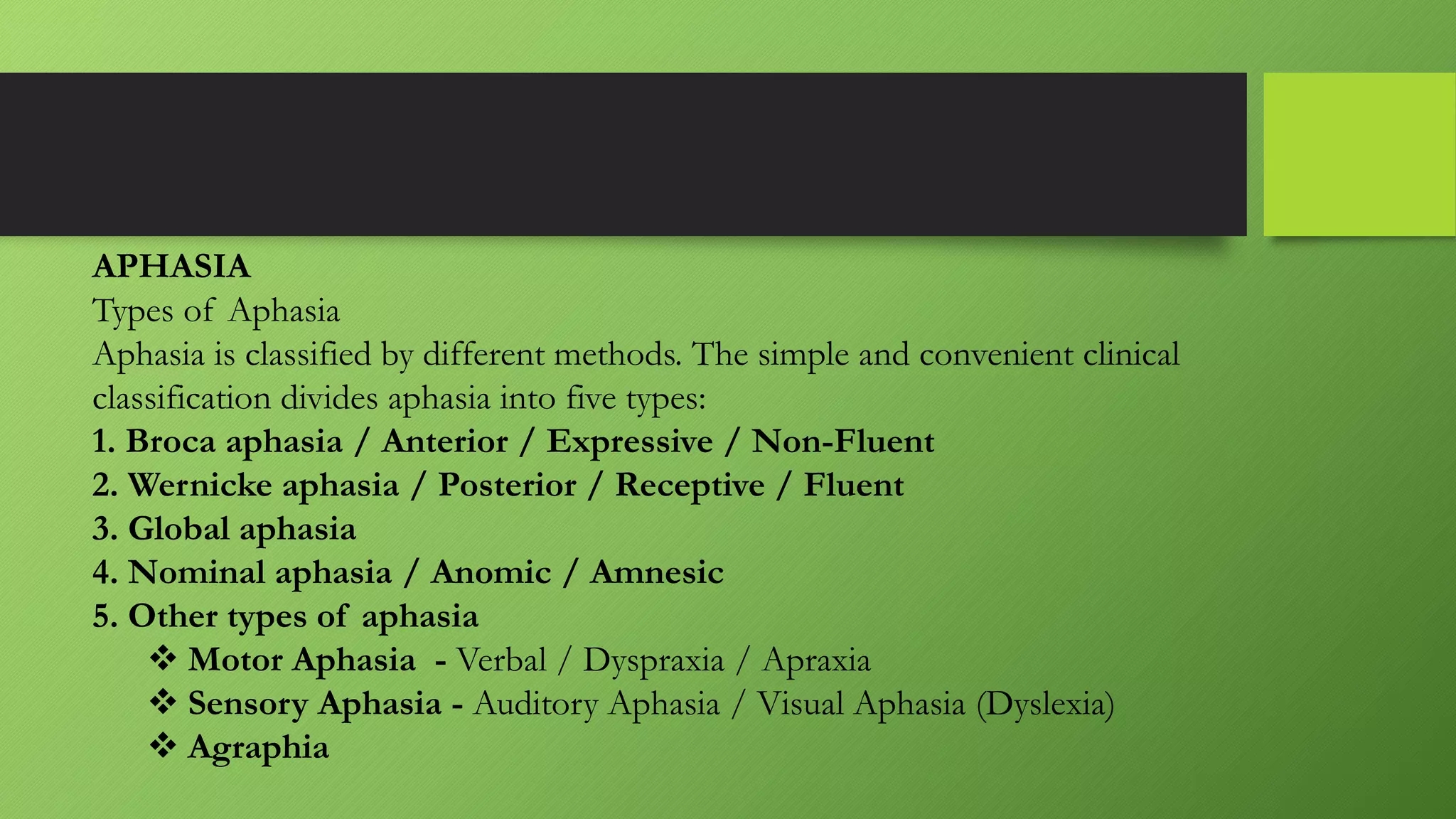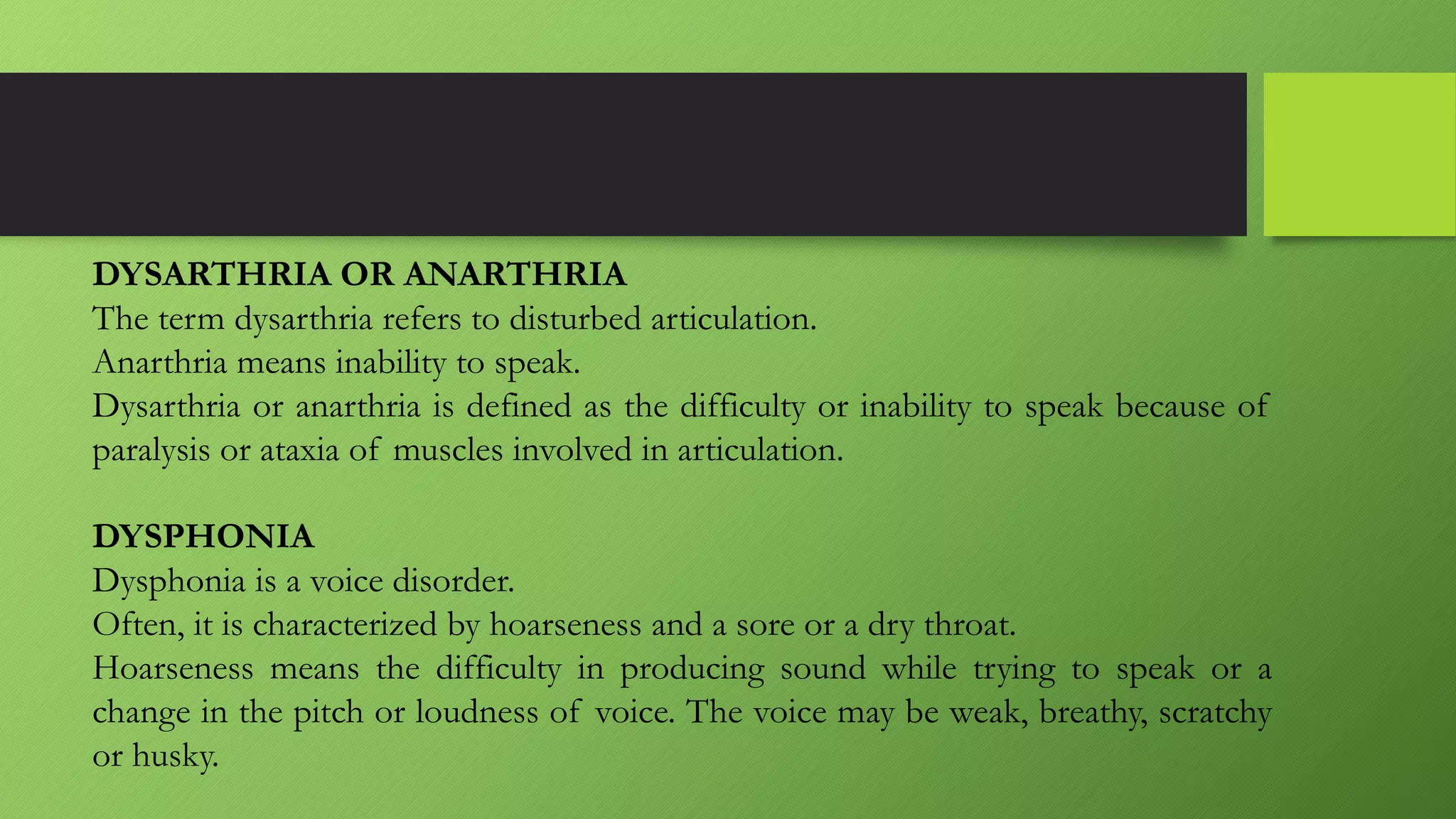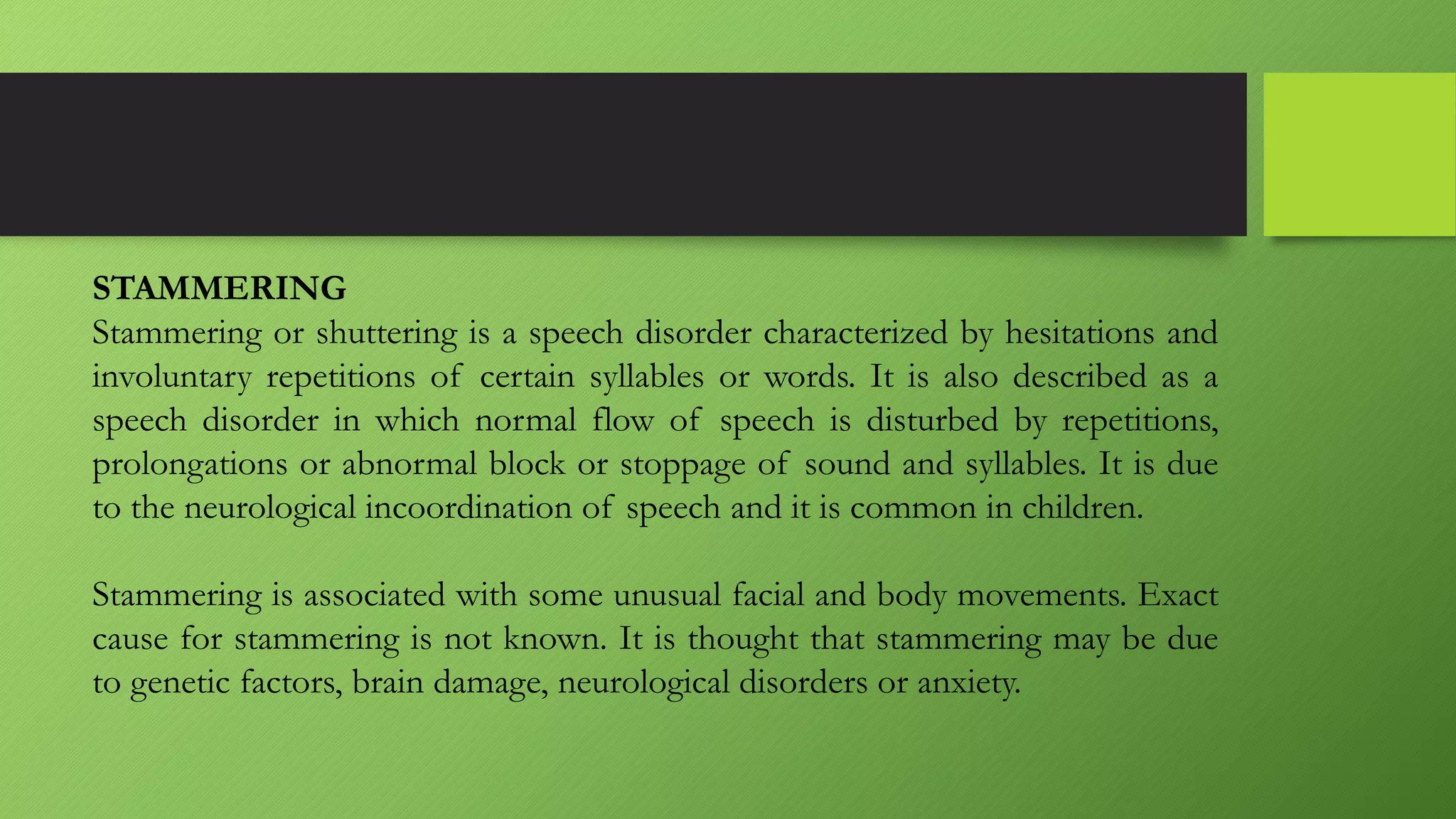This document summarizes the physiology of speech and articulation. It discusses the central and peripheral mechanisms involved in speech production. The central speech apparatus includes cortical and subcortical centers, while the peripheral apparatus includes structures like the larynx, pharynx, mouth, and lips. Speech develops through associating words with sensations and establishing neuronal pathways between auditory and motor areas. The key cortical areas involved are Wernicke's area for understanding speech, Broca's area for speech synthesis, and motor areas for activating articulators. Nervous control involves these cortical areas and subcortical structures coordinated by the dominant hemisphere. Common speech disorders are also briefly outlined.
